60 F. average high for April 19.
45 F. high temperature at KMSP on April 19, 2011.
.25" rain predicted for the metro area Saturday (best chance of puddles PM hours).
Sunday looks better, a mix of clouds and sun, highs in the low 60s with northwest winds blowing from 10-20 mph.
70 F. possible by Tuesday, the ECMWF model is hinting at 80 in the metro a week from today.

"The third greatest number of weather fatalities in Minnesota since 1990 has been due to excessive heat. Fourteen people have died from high heat and humidity. Only tornadoes and flooding have killed more people in the last 21 years." - from the Twin Cities National Weather Service. More on heatwaves and Severe Weather Awareness Week here.
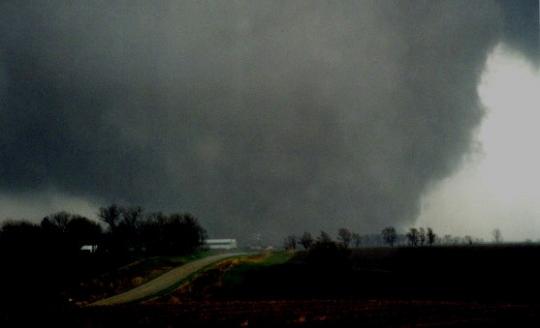

"Extremes are becoming more extreme. And none of it has anything to do with Al Gore. During a 2007 homecoming banquet for Iraqi war vets I asked my personal hero, Senator John McCain, if he thought this could all be some cosmic coincidence. He rolled his eyes. “Paul, I just returned from the Yukon, where a village elder presented me with a tomahawk that had just melted out of the permafrost. The answer is no.” How did so much of the Republican Party enter perpetual denial? We’ve turned climate science into a bizarre litmus test for conservatism. To pretend that heat-trapping gases can be waved away with a nod and a smirk is political fairytale. No harm. No foul. Keep drilling." - excerpt from a 2-part story I wrote for Bloomberg Businessweek. Details below.


Sticking My Entire Face Into The Climate Buzzsaw. Does this mean I won't get a Christmas card from Rush, the Wall Street Journal and Fox News this year? I hope not. This stopped being a popularity contest a long time ago. You may not care about our morphing climate (and more extreme weather), but I'll bet your grandkids will express a strong interest in a few years. "What did you know...when...and what did you do?" Andy Revkin's Dot Earth post at The New York Times is here.
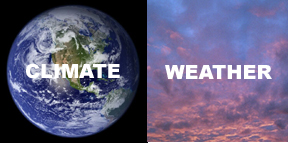
“The climate has shifted to a new state capable of delivering rare & unprecedented weather events." - Weather Underground's Dr. Jeff Masters, in a Think Progress article below.
“Most people in the country are looking at everything that’s happened; it just seems to be one disaster after another after another,” said Anthony A. Leiserowitz of Yale University, one of the researchers who commissioned the new poll. “People are starting to connect the dots.” - excerpt from a New York Times article; details below.
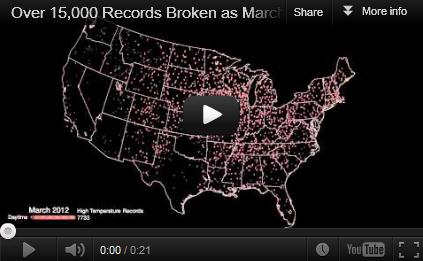
A March Like No Other. From an article at The Christian Science Monitor: "According to NOAA scientists at the National Climatic Data Center (http://www.ncdc.noaa.gov/sotc/), record and near-record breaking temperatures dominated the eastern two-thirds of the nation and contributed to the warmest March on record for the contiguous United States, a record that dates back to 1895. This animation shows the locations of each of the 7,755 daytime and 7,517 nighttime records (or tied records) in sequence over the 31 days in March."

1 in 3 Americans have been impacted by extreme weather, according to findings of a recent national poll.

4% increase in relative humidity, worldwide, in the last 30 years - meaning more moisture for floods and weather extremes.

"The fact that it's impossible to draw a straight line between climate change and the seemingly more turbulent weather doesn't mean we should act as if the two aren't linked. There's no doubt that warming raises at least the risk of extreme-weather events, something we're thinking about more in the early part of what is shaping up to be a brutally hot year in the U.S." - excerpt from an article about extreme weather and climate change from Time Magazine below.
"Americans, thus, correctly accept the idea global warming should make the weather warmer and precipitation events a bit more extreme. They may overreach in connecting individual weather events to climate change, but these connections are complex and it’s probably not reasonable to expect most people to unravel all of the intricacies." excerpt from meteorologist Jason Samenow in The Capital Weather Gang - details below.



Slow Warming Trend. The latest MSP "Meteogram" from Iowa State, shows highs topping 60 by Sunday, a growing chance of 70s by Tuesday and Wednesday.

A Springy Comeback. We've had our Canadian Relapse - now it's time for a surge of warmth to return. Highs reach the 60s all next week - the European ECMWF hinting at upper 70s to near 80 a week from today.

"Partly Puddly" Saturday. A clipper pushes 3-7 hours of showers across the Dakotas into Minnesota and Wisconsin Saturday, an eastbound cool front sparking a band of showers and possible thunder from Albany southward to Philadelphia and Raleigh. What's that in the Gulf of Mexico? The WRF model (valid noon Saturday) is hinting at some tropical development in the Gulf of Mexico, which wouldn't surprise me. Water temperatures in the Gulf are running 1-3 F. warmer than average - a possible contributing factor to the unusually severe tornadoes touching down so early in the season.
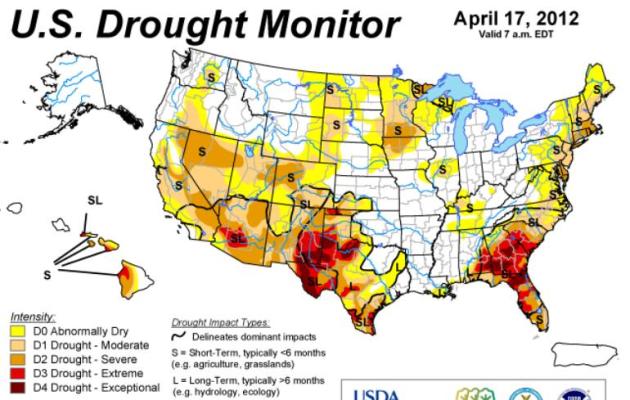
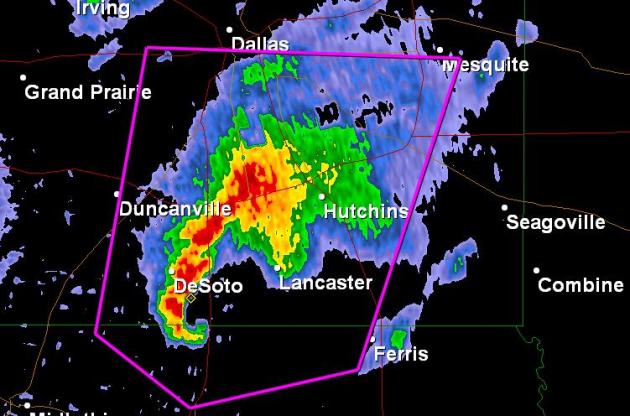
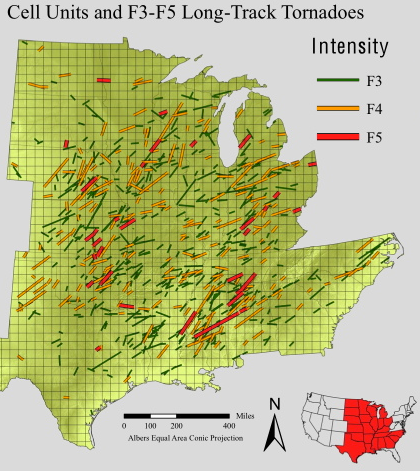
Map above courtesy of Michael Frates, University of Akron. More information here.
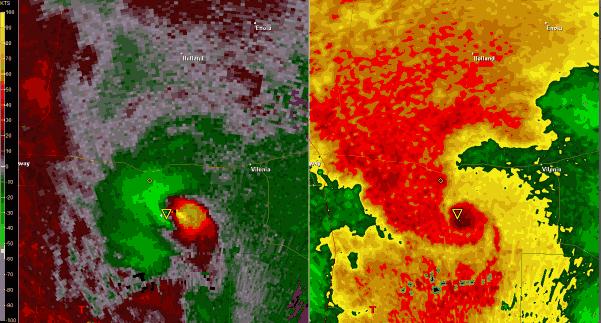

Photo credit above: "A tornado on the ground makes it way through the night near Salin, Kansas, during the third day of severe weather and multiple tornado sightings, April 14, 2012. A spate of tornadoes tore through parts of Oklahoma, Kansas, Nebraska and Iowa, churning through Wichita and other areas, causing widespread damage and killing two. (Gene Blevins/Reuters) PHOTO LINK."
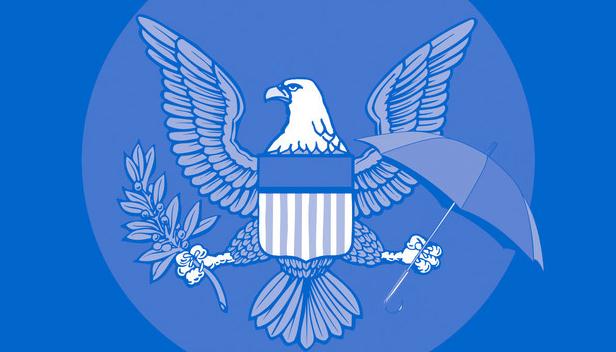
Do Emissions Cause Tornadoes? Climate Service Would Know. An interesting article from Bloomberg - here's an excerpt: "Last weekend, more than 100 tornadoes tore across the Plains states, smashing homes, tossing cars and killing six people. This might have counted as a rousing start to the spring tornado season, except for the dozen or more twisters that struck Dallas and Fort Worth earlier this month and the 223 that hit the U.S. in March -- almost three times the average for that month since 1990. Tornadoes have been blamed for 63 deaths this year in the Midwest and South. Already 2012 is looking as if it could keep up with last year’s lethal record of 550 tornado-related deaths nationwide -- more than in the previous 10 years combined. What’s up? Might this destructive weather have something to do with global warming?"
Illustration above courtesy of Bloomberg View.
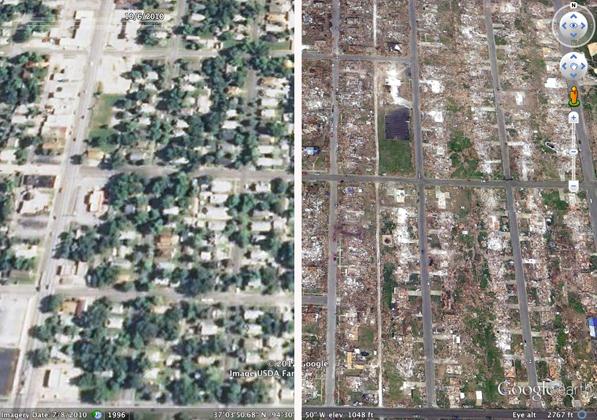
The Post-Storm Chasers. Here's a fascinating article from The Atlantic Cities: "When a series of tornadoes rumbled through the Dallas-Fort Worth area earlier this month, Andrew Curtis booked a flight. He's kind of like a stormchaser, except with the good sense to wait until the storm is already gone before checking things out. It's not the storm he's interested in, anyway. He wants to see the destruction. So, with his backpack-sized equipment, Curtis set off for Dallas to see just how much destruction the multiple tornadoes had caused. What he saw was not as dramatic as the media portrayed it. "They were pretty mild," says Curtis. "They were nothing compared to Joplin and Tuscaloosa."
Image above: Google.
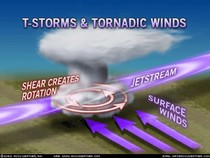
Tornado Safety Information. From the Twin Cities office of the National Weather Service:
Tornado watches highlight the area where tornadoes are most likely to develop. Continue with your normal activities, but keep informed of the latest weather information and be ready to get to shelter in case tornadoes develop quickly.
In the Home...
Go to the basement if possible. Get under a table, work bench, or some other sturdy furniture to avoid falling debris. A stairwell is also a good place to hide during a tornado.
If You Cannot Get to a Basement...
Go to a small interior room on the lowest floor. Closets, bathrooms, and interior halls afford the best protection in most cases, or try to hide under a bed. Get under something sturdy or cover yourself with blankets. Stay away from windows.
In an Apartment, School or Office Building...
Move to the inner-most room on the lowest level or to a pre-designated shelter area. Stay away from windows. If in a hallway, crouch down and protect your head from flying debris. Avoid areas with glass and large roof expansions.
In a Mobile Home, Car, Truck or Other Vehicle...
Abandon these as quickly as possible. Seek a sturdy shelter or permanent structure. Remember that many deaths occur when people try to drive away in a vehicle, but get caught in the deadly winds. Avoid bridges since they act as wind tunnels.

High-Resolution Winds Across The USA. Back by popular demand, this is actually a high-resolution short-term forecast of wind speed/direction, based on NOAA's NDFD - courtesy of hint.fm. You can click on the link to get this up on your browser - zoom into specific regions and a pop-up window gives you forecast wind direction/speed wherever you place your cursor. This is one of the best visualizations of weather information I've ever seen - anywhere.


Light Jackets Give Way To Shorts Next Week. The CPC (Climate Prediction Center) 6-10 day temperature trend (upper left) and 8-14 day trend (upper right) shows a continued warm bias for much of America east of the Rockies. Not as dramatic as March, but some 70s are likely from Tuesday through Sunday of next week. Map courtesy of NOAA and Ham Weather.
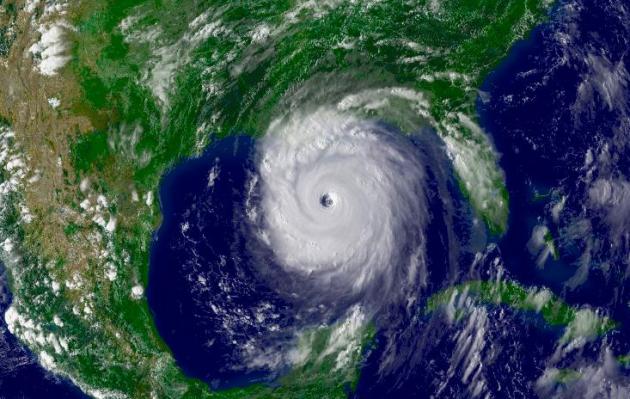
• Make plans to secure your property. Permanent storm shutters offer the best protection for windows. A second option is to board up windows with about 5/8-inch-thick marine plywood, cut to fit and ready to install.
• Install straps of additional clips to securely fasten your roof to the frame structure. This will reduce roof damage.
• Be sure trees and shrubs around your home are well-trimmed.
• Clear loose and clogged rain gutters and down spouts.
• Determine how and where to secure your boat (if you have one).
• Consider building a safe room."
* Image of Hurricane Katrina (2005) above courtesy of NASA and NOAA.
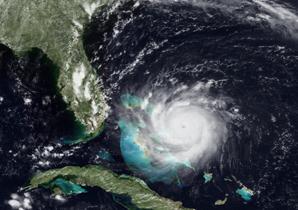
Photo credit above: "This image from the GOES-7 satellite shows Hurricane Andrew at its peak intensity on August 24, 1992 before making landfall near Homestead, FL." Source: NOAA.
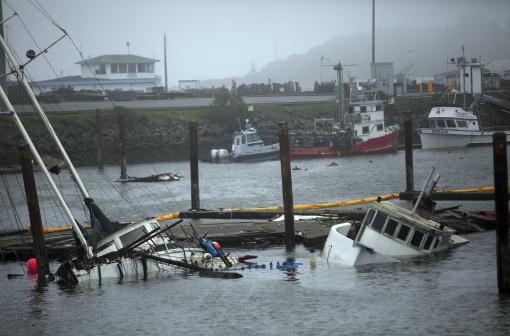
Photo credit above: "Sunken fishing boats in the harbor after tsunami swells from the earthquake in Japan last week stuck the area in heights of up to eight feet, in Crescent City, Calif., March 15, 2011. The city has long been known as one of the nation’s most susceptible inlets when it comes to tsunami, and this past week's tsunami has left damages believed to be in the tens of millions of dollars, shutting down one of Northern California’s most lucrative fishing operations. (Jim Wilson/The New York Times)."

"As we were trying to watch TV tonight we were constantly interrupted with annoying tornado "test" warnings. We realize it is tornado awareness month, but we are used to tests on the first Wednesday of the month. The tests said they were supposed to expire at 7:10 but they were still broadcast well after 8:00. All of this at the same time the weather service has been trying to get us to take actual warnings seriously! Tornado warnings are too much like the little boy who called "Wolf" and this did not improve matters." - Anonymous.
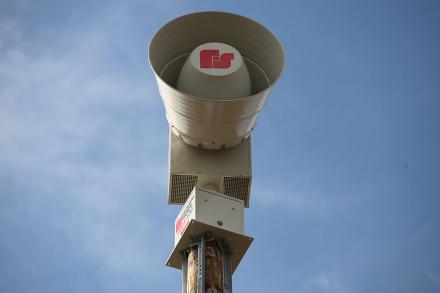
Dear Anonymous- I understand your frustration, and sympathize. The last thing any of us want is a glitch or oversight that leads to apathy or complacency the next time a (real) EF-3 tornado touches down close to home. Here is an explanation of what happened from Todd Krause, at the local, Twin Cities National Weather Service:
"We used the TOR code on KEC-65 and all our other NOAA Weather Radios in the Chanhassen area. This was at about 6:57 pm, and we had a 15 minute expiration on it. Comcast chose to run it at 6:57 pm (note that stations/cable need not run any of our warnings), then somehow it kept on repeating every 5-15 minutes, long after our test warning had ended. The warning was removed from our playlist on KEC-65 at 7:15 pm. But it kept on getting repeated until shortly before 9 pm and we were inundated with calls. We talked with one of the top guys at Comcast around 8 pm, and he seemed to think this was just in the southwest suburbs. He gave the order to his people to get it stopped, which eventually happened.
You may have been called by people, which is why I'm letting you know what happened, just in case you have to explain it. Thanks."
Todd Krause, MSP National Weather Service.
* In short, a technical glitch. Thanks Todd (and anonymous).
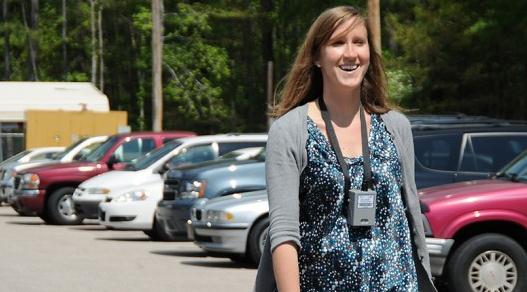
Device Determines Just How Much Pollution Its Wearer Is Breathing In. Gizmag.com has the details: "For decades now, scientists have been monitoring air pollution in order to better understand how atmospheric contaminants affect our health. The gathered data can tell us the amount and type of pollutants that are in the air, which can in turn sometimes be linked to health problems in the area. What that data doesn’t tell us, however, is the effect that different types of physical activities can have on the amount of pollutants that are breathed in – if a smog warning is issued, for instance, does that mean we shouldn’t go outside at all, or just that we shouldn’t go jogging outside? A new personal exposure monitoring device, known as the MicroPEM, has been designed to answer such questions."

Can Statistics Predict Weather Without Meteorologists? This App Thinks So. Uh oh - I'm about to be replaced by an app. I feared it would come to this. Mashable.com has the bleak details: A new app called Ourcast aims to replace the weatherman with statistics and crowdsourcing. “If you were able to watch what the weather did in the last hour, you can get a pretty good idea of what was going to happen in the next hour,” says Mark Hohmann, one of the app’s creators. Ourcast uses real-time radar data to predict, based on historical patterns, how weather at a given location will change within the next two hours. It further distinguishes between rain, snow and sunny skies by tapping into data streams from 20,000 home weather stations and asking users to check in with their local weather."

Wind Turbine To Harvest Energy And Water From Desert Air. Another fascinating article from gizmag.com. Here's an excerpt: "We've all seen ice cold glasses and bottles dripping with condensation after cooling water vapor in the air, and though grabbing water out of thin air is not new, it took French inventor and Eolewater founder Marc Parent's umpteenth emptying of his air conditioner's condensate to envision harvesting atmospheric moisture on a commercial scale using wind turbines. After years of designs and prototypes, his proof-of-concept device, essentially a wind-powered refrigeration/condensation/filtration unit, was put in operation in the dry desert air of Abu Dhabi last October where it's been reliably extracting 130-200 gal (approx. 500-800L) of clean, fresh water a day ever since."
Where Are All The TV Viewers? Ratings Are Down Across The Board. Here's an excerpt of an article from Bill Carter at The New York Times: "The pattern of plummeting ratings across the board in network television continued — with a vengeance — Tuesday night as numerous shows hit either a low-water mark for this season or even the entire series run. On Fox, “Glee” scored the lowest rating in the show’s history, a 2.4 in the 18- to 49-year-old age group that determines much of the network’s ad sales. On ABC, the new comedy “Last Man Standing” sank to a season (and thus all-time) low with just a 1.6 rating. And the drama “Private Practice,” moved to a tryout at 10 p.m. on Tuesday, plunged to a lowest-ever 1.7 rating."


A Foul Thursday. Under a canopy of thick clouds leaking light rain temperatures never made it out of the 40s across most of Minnesota. Parts of drought-plagued southern Minnesota picked up .3 to .5" rain, only .06" in the Twin Cities and no rain reported at St. Cloud. Highs ranged from 44 at Redwood Falls to 51 at Alexandria.
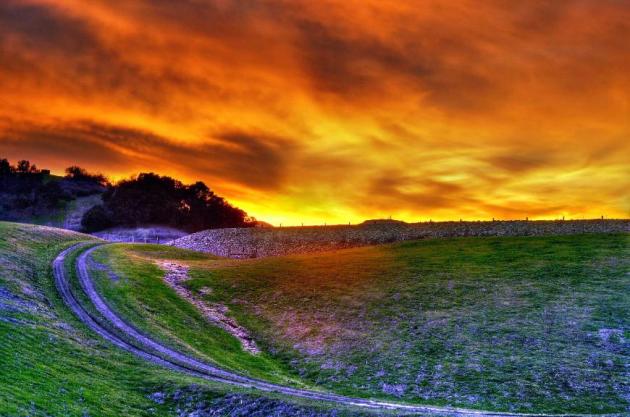
TODAY: Frosty start in the outlying suburbs? Partly sunny and cool. Winds: N 8-13. High: 53
FRIDAY NIGHT: Clouds increase, not quite as chilly. Low: 37
SATURDAY: Cool and damp. A few showers are likely. Winds: SE 10-15. High: 59
SUNDAY: A bit better. More clouds than sun. Winds: NW 10-15. Low: 42. High: 62
MONDAY: Bright sun, less wind. Perfect. Low: 43. High: 63
TUESDAY: Blue sky, a bit milder. Low: 45. High: 68
WEDNESDAY: Some sun, stray T-storm possible. Low: 52. High: 72
THURSDAY: Hello spring. Warm sunshine. Low: 55. High: 73

Expect the Unexpected
"Man plans. God laughs" goes my favorite Yiddish proverb. How true. Weather is a metaphor for life, certainly for business: frequent storms and squalls - but the gloom always lifts. Given time, the sun will return.
Four years ago, having just gotten fired from a job I loved, I was despondent. I thought new studios would be producing 3 minute weather shows for various media. If you would have predicted I'd be launching a new, national weather channel I would have laughed it off. No way. It just goes to show you can't predict the future. But if you stay flexible and open-minded, good things sometimes fall into your lap - out of left field.
Getting sick of wearing that handsome jacket? Me too. A touch of frost gives way to some cool sun and low 50s today. The sky will look like late October. A few showers arrive Saturday (not an all-day wash-out). Remember your mantra: "we need the rain." Right. Sunday looks drier; low-60s will feel good.
Our cool correction gives way to a very springy spell next week; a run of 70s likely. I wouldn't be surprised to see 80 a week from tomorrow. I'd still hold off on the annuals until Mother's Day but I suspect we've seen the last frost.
Climate Stories...
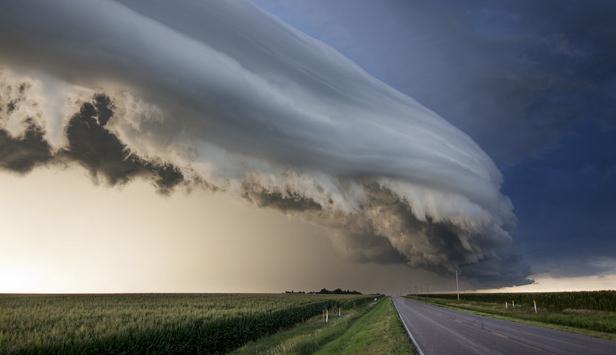
Climate Change Has Nothing To Do With Al Gore. Here's is an excerpt of a 2-article series I wrote for Bloomberg Businessweek: "I’m a moderate Republican - a fan of small government, light regulation and market solutions. A serial entrepreneur, I founded companies that invented 3-D television weather graphics and the first app on a cell phone. I’m a Penn State meteorologist. My day-job since 1979: tracking weather for TV news. If you know anything about American politics these days, and follow the climate war at all, you might anticipate with some confidence that I agree global warming is a hoax. That’s a shame, and I hope it changes soon. In the 1980s I was skeptical that an upward blip in global temperatures was the result of manmade gases. Then the blips persisted. By the mid-90s I began to see them as unsettling changes. The weather was becoming erratic and even more unpredictable than usual. Storms were more frequent and intense. Curious, I began including climate statistics in daily TV weather segments, like annual trends in flash-flooding, hail, summer humidity, fewer subzero nights and decreased snowfall."
Photo credit above: "Clouds form over an empty road, in Kearney, Nebraska. Photograph by Ryan McGinnis."
* Let me anticipate the comments (which I don't read, and never will). All this negativity and angst. Yes, I'm a "RINO", a hypocrite (I only own one hybrid and my 1950s home isn't as energy efficient as it could be - or will be. I'm a bit of a creep, an opportunist, a lousy businessman (my companies over the years employed less than 250 people), a terrible father, an inconsiderate husband (still married to the same poor woman for 28 years! Imagine that.) I have bad hair and a very bad attitude... and at times I'm SO full of myself. All true. I had a case of adult acne in my 30s, I don't floss regularly, I can be anti-social and I watch "Shameless" on Showtime (to balance out NOVA and Frontline on PBS). I have a terrible digital camera addition too - you got me there. And those are some of my better attributes.
Dear Deniers: you're welcome to your opinions - but you are not free to make up your own scientific facts. You call me an alarmist? The data - the trends are a bit alarming, and if you're not just a little bit concerned about the direction we're heading you're not paying attention. As the data becomes more clear the skeptics are sounding more shrill. "We can't win on the facts, conditions on the ground (or in the air), so let's resort to name-calling. It's 4th grade all over again. The concept of "actions have consequences" (somehow) threatens their world-view and everything they hold dear. Here's some advice: get over it. Given the facts, the data, and the trends, it's OK to change your mind, however reluctantly. I promise you won't get a thank you card from Al Gore. Or me.

NASA's James Hansen Reviews Draft American Meteorological Society Climate Statement: Stronger But Still Inadequate. Details from Dr. James Hansen at Think Progress: "Many television meteorologists question manmade climate change, including ones certified by the American Meteorological Society (AMS). The society’s statement on climate change is now more than five years old, overdue for a revision. A few months ago, members of Forecast the Facts called on the AMS to pass a strong, science-based information statement on climate change. After months of delay, the AMS has finally completed a draft statement. The draft is only viewable by AMS members. Climate scientist Dr. James Hansen, director of NASA’s Goddard Institute for Space Studies, has read the statement and offers his opinion — Brad Johnson, campaign manager of Forecast the Facts. "As a climate scientist, I know that there’s a huge gap between what scientists understand about climate change and what the public knows. And when TV meteorologists get the science wrong, it just furthers public confusion."
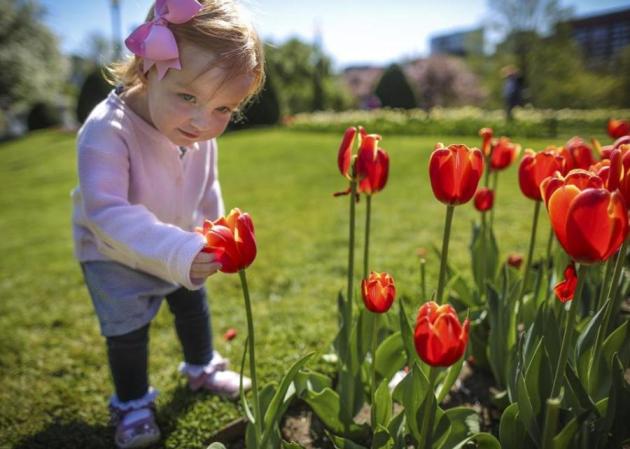
Climate Shift Could Help Struggling N.E. Species. Here's a (rare) positive spin from a trusted news organization; an excerpt from an article at The Boston Globe: "Warm winters like the one that just passed are likely to become more frequent as the planet heats up, scientists predict, and many of the consequences could be dire, from rising sea levels to droughts to the spread of pests and diseases. But in the lesser-noted ledger of global warming, there are also potential benefits for wildlife. Among the potential beneficiaries is the New England cottontail, an endangered brown rabbit that, in a typical winter, stands out against the snow, making it an easy target for predators. Not so this nearly snowless year."
Photo credit above: "ARAM BOGHOSIAN FOR THE BOSTON GLOBE."
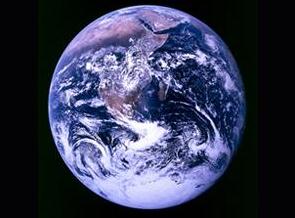
Are We Warming The Planet? That Is The Key Question. NPR has more details: "An intense debate has been raging on The New York Review of Books the past few weeks on the issue of global warming and its skeptics. Even though Adam wrote about global warming yesterday, this is so important and powerful that it shouldn't pass unnoticed here on 13.7. In one corner stands William D. Nordhaus, the Sterling professor of economics at Yale University. In the other corner stand three of the 16 scientists behind an op-ed published in The Wall Street Journal on January 27, 2012, "No Need to Panic About Global Warming." The piece spells out their basic objections to global warming."

DoD, Navy and Wind Farm Developer Release Historic Memorandum Of Agreement. Here's a press release from the Navy. Yes, the U.S Navy: "NAVAL AIR STATION (NAS) KINGSVILLE, Texas (NNS) -- The Navy released today a memorandum of agreement (MOA) signed by officials from the Department of Defense (DoD), the Department of the Navy and Texas Wind Group (TWG) that outlines a mutual approach to enable a renewable energy developer to build and operate wind turbines at planned locations in Kleberg County, Texas, while reducing the potential for those turbines to affect flight operations at NAS Kingsville. "Sustaining military readiness is the number one priority of everyone in the Navy chain of command," said Capt. Mark McLaughlin, commanding officer of NAS Kingsville. "This agreement helps preserve NAS Kingsville's capability to train naval aviators, while enabling the compatible development of new energy sources."

- Arctic Warming Favors Extreme, Prolonged Weather Events ‘Such As Drought, Flooding, Cold Spells And Heat Waves’
- Is Climate Change Bringing the Arctic to Europe?
- Hansen et al: “Extreme Heat Waves … in Texas and Oklahoma in 2011 and Moscow in 2010 Were ‘Caused’ by Global Warming”

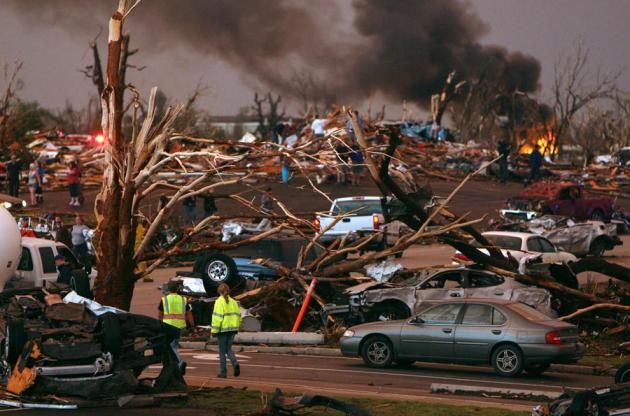
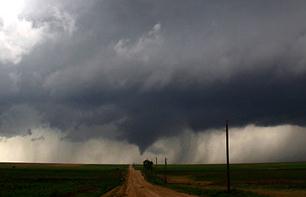
Photo credit above: "A tornado makes its way through farmlands near Rush Center, Kansas, on April 14, 2012. Over 100 tornadoes ripped through several Plains states in just 24 hours that weekend." Gene Blevins / Reuters.
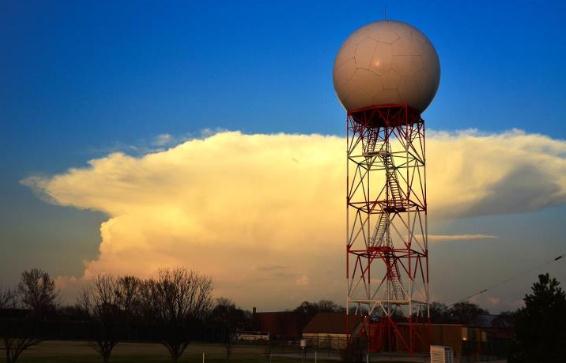
- 82 percent of Americans report that they personally experienced one or more types of extreme weather or a natural disaster in the past year;
- 35 percent of all Americans report that they were personally harmed either a great deal or a moderate amount by one or more of these extreme weather events in the past year;
- Over the past several years, Americans say the weather in the U.S. has been getting worse – rather than better – by a margin of over 2 to 1 (52% vs. 22%)."

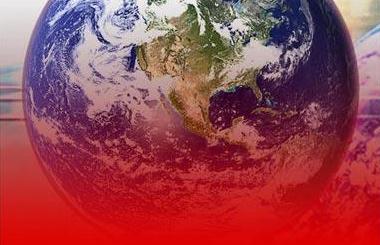
-- "Both the U.S. and Canada are developing technologies to better track increased shipping traffic in the Arctic.
-- Shell Oil is exploring for oil and natural gas in the Beaufort Sea, just north of Alaska, and Exxon Mobile has just signed a deal with the Russians to do the same thing in their Arctic waters.
-- In 2009, because “evidence indicates that the Earth’s climate is changing, and the most rapid changes are occurring in the Arctic,” the U.S. Navy created Task Force Climate Change to help naval leaders deal with the significant climatic changes in the Arctic.
-- The Pacific island nation of Kiribati is negotiating to buy land on the island of Fiji so it will have some place to move its 113,000 people before the Pacific Ocean inundates the entire nation (the first of thousands of islands so threatened)."
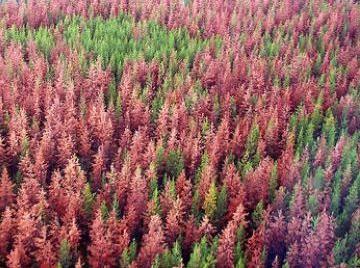
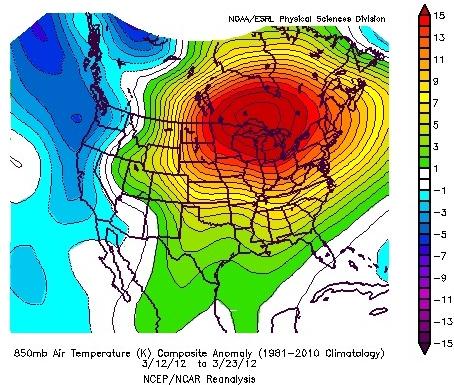

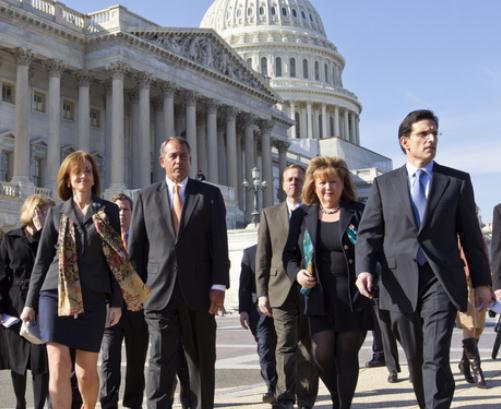
Photo credit above: J. Scott Applewhite/AP. "Congressional Republicans have a unique achievement, they are further from the political center than their predecessors of the past century."
No comments:
Post a Comment